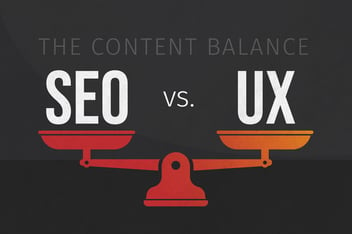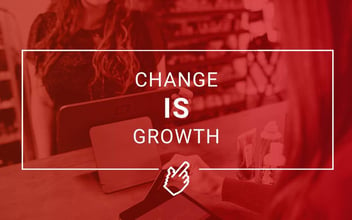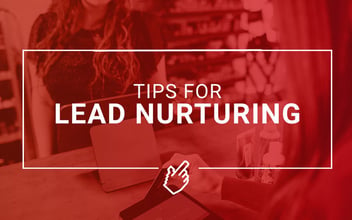One of the most important aspects of determining marketing success requires math. Sorry folks, I don’t love it either. What I’m referring to is calculating the economics of a customer. The good news, it doesn’t require calculus. Simply put, here’s a simple explanation for understanding how much value a net new, or existing customer is worth to your organization, and how much it may cost to get more of them.
Inbound marketing approaches are great for complex products or services that include a consultative sales approach and typically require a higher amount of consideration from a prospect. That said, understanding the economics of a customer is paramount to determining what a potential marketing investment may yield.
Calculating the Economics of a Customer
The first step in working to determine ROI is calculating the economics of a customer. Some organizations have this information handy; however, for those of you that don’t, these are some of the different metrics to consider when formulating that equation.
- Customer Acquisition Cost (CAC): This is the total cost of the acquisition of a customer, which includes all the expenses incurred in the sales and marketing efforts, such as advertising, sales commissions, and other related costs.
- Customer Lifetime Value (CLV): This is the total revenue a customer is expected to generate for your business over their entire lifetime. It considers the customer's average purchase value, purchase frequency, and average customer lifespan.
Once you have these two metrics, you can calculate the economics of a customer using the following formula:
CLV – CAC = Customer Profitability
In other words, subtract the cost of acquiring the customer (CAC) from the revenue you expect to earn from them over their lifetime (CLV). The result is the profitability of that customer for your business.
Knowing the customer lifetime value (CLV) helps you determine how much you can spend on customer acquisition (CAC) and still remain profitable. For example, if the CLV of a customer is $10,000 and the CAC is $1,000, you know that you can spend up to $1,000 to acquire a customer and still break even. Therefore, you can allocate your marketing budget accordingly and focus on the channels and tactics that provide the highest return on investment (ROI).
By understanding the economics of your customers, you can also identify your most valuable customers and tailor your marketing efforts to their needs and preferences to help duplicate them. This is where our agency typically suggests developing messaging tailored to these specific audiences, building incentive programs for repeat business or referrals, and a variety of other tactics to help engage and grow these opportunities.
Additionally, once you’ve calculated the economics of a customer, we can start to test various ways of increasing or reducing CAC, to see how we may be able to reduce CAC and increase profitability without losing the number of leads, or inversely, testing how many more leads can be generated by increasing CAC. Either way, reporting over time will help to provide transparency into this calculation with respect to success.
Calculating ROI for Inbound Marketing
Overall, understanding the economics of your customers is essential to developing an effective marketing strategy that maximizes profitability and helps you grow your business. Once we know what a potential customer costs to acquire, and how profitable they can be as an opportunity, we can then start to estimate what an inbound marketing approach could potentially yield. While this is still an estimation, we can use some context clues from previous data to make this determination.
If you want to skip the math and let someone else handle it, HubSpot has built a great tool in their ROI calculator. While there is no way to determine exactly what you can expect from an ROI standpoint, this tool gives you a good idea of the possibilities, and the opportunity to view what return would look like in a conservative, average, and aggressive cadence.
If you don’t want to use a calculator, there is another simple formula to help determine what success may look like:
- Determine Yearly Sales Revenue Goals
You’ll want to first start with determining your overall sales revenue goals for a year. Picking a realistic growth target here is typically imperative to avoid skewing your math.
Example: Your company wants to add an additional $100,000 in net new revenue this upcoming year. - Calculate the Average Sale Price/Order Size.
The next step is to calculate your average sale price or order size. You do this by looking at previous sales opportunities and dividing your total deal value vs. the number of deals you are reviewing. My suggestion here is to take a larger sample size, maybe even a year. This is also easy to calculate if you use a tool like HubSpot.
Example: Your company’s average order size per year is $10,000 - Divide the Average Deal Value by the Revenue Target
Once you have both of those metrics determined, divide your average deal value by the revenue target to arrive at the quantity of net new deals you’ll need to win. Once we’ve determined this, we can now start to work our way back into what we’ll need to invest in order to achieve your goal. The formula is listed below:
Revenue Goal ($100,000)➗ Average Deal Value ($10,000) = New Deals Needed (10)
Now working backward, we can take our Customer Acquisition Cost (CAC) and multiply it by the number of new deals needed.
New Deals Needed (10) x Customer Acquisition Cost (1,000) = $10,000 budget
This should hopefully give you a rough estimate of how much budget may be needed to accomplish your goal. Again, to reiterate, there is no exact way of saying how much or how little you should invest, this number is typically a great gut check to get you close to your goals.
If you need help determining these metrics or have questions about calculating the economics of a customer, please don’t hesitate to let us know. We’d love to help you out! As always, thanks so much for reading our content.





